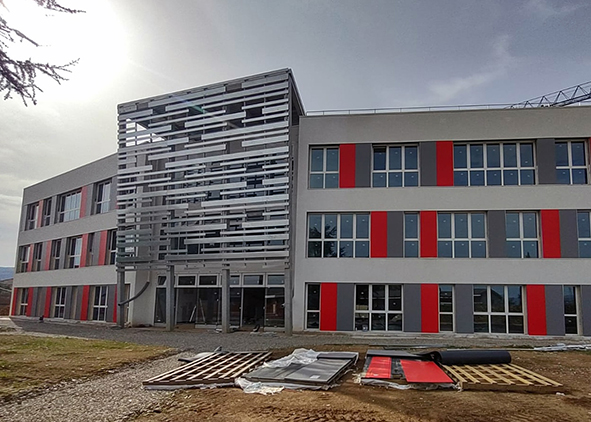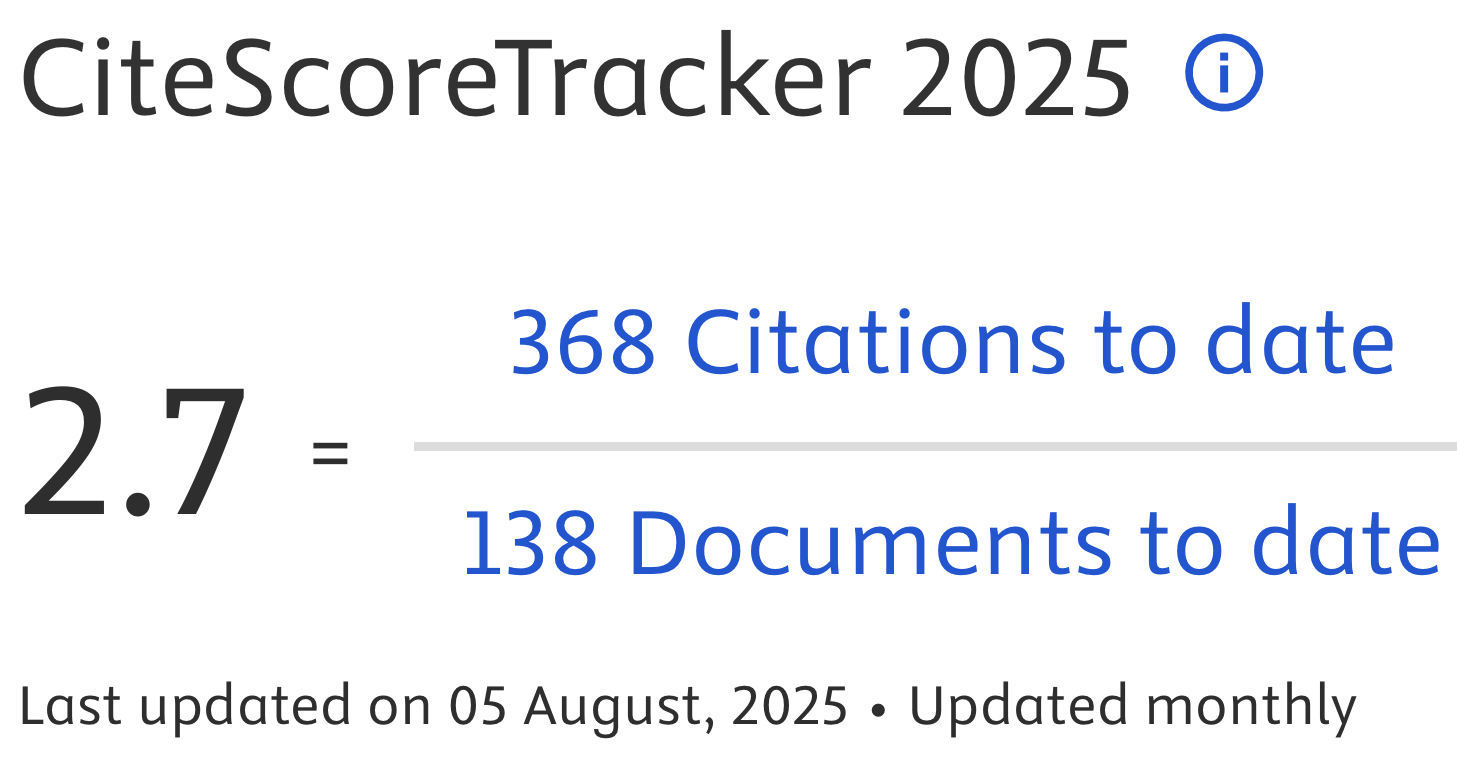Life cycle thinking strategies for constructing nZEB schools
DOI:
https://doi.org/10.19229/2464-9309/15202024Keywords:
nearly zero energy building, school buildings, life cycle assessment, sustainable design, end-of-lifeAbstract
By 2050, Italy, too, will have to achieve climate neutrality. Compared to current standards, almost 75% of the existing building stock is energy inefficient, and since 17% consists of school buildings, intervening in this type of building is essential to develop virtuous paths to achieve 2030 decarbonisation targets. Vertical envelopes are among the technological units that contribute the most to achieving better energy-environmental performance of the building, but at the same time, they have a certain weight in terms of carbon and embodied energy; moreover, LCA studies dealing with the vertical building envelope mainly focus on ‘cradle-to-grave’ impacts, neglecting end-of-life scenarios based on the recycling of selective demolition materials. This study explores the effects of adopting circular design strategies as LCA-based environmental impacts in an nZEB school.
Article info
Received: 29/03/2024; Revised: 29/04/2024; Accepted: 09/05/2024
Downloads
Article Metrics Graph
References
Abdelaal, F. and Guo, B. H. W. (2022), “Stakeholders’ perspectives on BIM and LCA for green buildings”, in Journal of Building Engineering, vol. 48, article 103931, p. 1-11. [Online] Available at: doi.org/10.1016/J.JOBE.2021.103931 [Accessed 10 March 2024].
Ansah, M. K., Chen, X., Yang, H., Lu, L. and Li, H. (2021), “Developing a tier-hybrid uncertainty analysis approach for lifecycle impact assessment of a typical high-rise residential building”, in Resources, Conservation and Recycling, vol. 167, article 105424, pp. 1-16. [Online] Available at: doi.org/10.1016/J.RESCONREC.2021.105424 [Accessed 10 March 2024].
Birgisdottir, H., Moncaster, A., Wiberg, A. H., Chae, C., Yokoyama, K., Balouktsi, M., Seo, S., Oka, T., Lützkendorf, T. and Malmqvist, T. (2017), “IEA EBC annex 57 evaluation of embodied energy and CO2eq for building construction”, in Energy and Buildings, vol. 154, pp. 72-80. [Online] Available at: doi.org/10.1016/J.ENBUILD.2017.08.030 [Accessed 10 March 2024].
Cheong, C. Y., Brambilla, A., Gasparri, E., Kuru, A. and Sangiorgio, A. (2024), “Life cycle assessment of curtain wall facades – A screening study on end-of-life scenarios”, in Journal of Building Engineering, vol. 84, article 108600, pp. 1-30. [Online] Available at: doi.org/10.1016/J.JOBE.2024.108600 [Accessed 10 March 2024].
Dodd, N., Donatello, S. and Cordella, M. (2021), Level(s) indicator 1.2 – Life cycle Global Warming Potential (GWP) – User manual – Introductory briefing, instructions and guidance (Publication version 1.1). [Online] Available at: susproc.jrc.ec.europa.eu/product-bureau/sites/default/files/2021-01/UM3_Indicator_1.2_v1.1_37pp.pdf [Accessed 10 March 2024].
Erhorn-Kluttig, H. and Erhorn, H. (2014), “School of the Future – Towards Zero Emission with High Performance Indoor Environment”, in Energy Procedia, vol. 48, pp. 1468-1473. [Online] Available at: doi.org/10.1016/j.egypro.2014.02.166 [Accessed 10 March 2024].
European Commission (2020a), Communication from the Commission to the European Parliament, the Council, the European Economic and Social Committee and the Committee of the Regions – A Renovation Wave for Europe – Greening our buildings, creating jobs, improving lives, document 52020DC0662, 662 final. [Online] Available at: eur-lex.europa.eu/legal-content/EN/TXT/?qid=1603122220757&uri=CELEX:52020DC0662 [Accessed 10 March 2024].
European Commission (2020b), Communication from the Commission to the European Parliament, the Council, the European Economic and Social Committee and the Committee of the Regions – Europe’s moment – Repair and Prepare for the Next Generation, document 52020DC0456, 456 final. [Online] Available at: eur-lex.europa.eu/legal-content/EN/TXT/?uri=CELEX% [Accessed 10 March 2024].
European Commission (2019), Communication from the Commission to the European Parliament, the European Council, the Council, the European Economic and Social Committee and the Committee of the Regions – The European Green Deal, document 52019DC0640, 640 final. [Online] Available at: eur-lex.europa.eu/legal-content/EN/TXT/?uri=COM%3A2019%3A640%3AFIN [Accessed 10 March 2024].
European Parliament and Council of the European Union (2024), Directive (EU) 2023/2413 of the European Parliament and of the Council of 18 October 2023 amending Directive (EU) 2018/2001, Regulation (EU) 2018/1999 and Directive 98/70/EC as regards the promotion of energy from renewable sources, and repealing Council Directive (EU) 2015/652, document 32023L2413, PE/36/2023/REV2. [Online] eur-lex.europa.eu/legal-content/EN/ALL/?uri=CELEX:32023L2413 [Accessed 10 March 2024].
Falana, J., Osei-Kyei, R. and Tam, V. W. Y. (2024), “Towards achieving a net zero carbon building – A review of key stakeholders and their roles in net zero carbon building whole life cycle”, in Journal of Building Engineering, vol. 82, article 108223, pp. 1-20. [Online] Available at: doi.org/10.1016/J.JOBE.2023.108223 [Accessed 10 March 2024].
Fetting, C. (2020), The European Green Deal, ESDN Report, December. [Online] Available at: esdn.eu/fileadmin/ESDN_Reports/ESDN_Report_2_2020.pdf [Accessed 10 January 2024].
Fufa, S. M., Skaar, C., Gradeci, K. and Labonnote, N. (2018), “Assessment of greenhouse gas emissions of ventilated timber wall constructions based on parametric LCA”, in Journal of Cleaner Production, vol. 197, part 1, pp. 34-46. [Online] Available at: doi.org/10.1016/j.jclepro.2018.06.006 [Accessed 10 March 2024].
Galata, A., Brogan, M., Pedone, G., De Ferrari, A. and Roderick, Y. (2015), “The VERYSchool Project – Intelligent ISO 50001 Energy Management Decision Making in School Buildings”, in Mahdavi, A., Martens, B. and Scherer, R. (eds), ECPPM 2014 – eWork and eBusiness in Architecture, Engineering and Construction | Proceedings of the 10th European Conference on Product and Process Modelling, Vienna Austria, 17-19 September 2014, CRC Press, Leiden (The Netherlands), pp. 855-862. [Online] Available at: eprints.sztaki.hu/8149/1/Galata_855_2796706_ny.pdf [Accessed 09 May 2024].
Gantner, J., Wittstock, B., Lenz. K., Fisher, M. and Sedlbauer, K. (2012), EeBGuide Guidance Document – Part B – Buildings – Operational Guidance for Life Cycle Assessment Studies of the Energy-Efficient Buildings Initiative. [Online] Available at: cordis.europa.eu/project/id/285490/reporting [Accessed 10 March 2024].
Giordano, R. and Andreotti, J. (2023), “DEC50 – Strumenti per la decarbonizzazione dei manufatti edilizi | DEC50 – Building decarbonisation tools”, in Techne | Journal of Technology for Architecture and Environment, vol. 26, pp. 207-216. [Online] Available at: doi.org/10.36253/TECHNE-14435 [Accessed 10 March 2024].
Hollberg, A. and Ruth, J. (2016), “LCA in architectural design – A parametric approach”, in The International Journal of Life Cycle Assessment, vol. 21, issue 7, pp. 943-960. [Online] Available at: doi.org/10.1007/s11367-016-1065-1 [Accessed 10 March 2024].
Hur, T., Lee, J., Ryu, J. and Kwon, E. (2005), “Simplified LCA and matrix methods in identifying the environmental aspects of a product system”, in Journal of Environmental Management, vol. 75, issue 3, pp. 229-237. [Online] Available at: doi.org/10.1016/j.jenvman.2004.11.014 [Accessed 10 March 2024].
IEA – International Energy Agency (2023), World Energy Outlook 2023. [Online] Available at: iea.blob.core.windows.net/assets/86ede39e-4436-42d7-ba2a-edf61467e070/WorldEnergyOutlook2023.pdf [Accessed 10 March 2024].
MITE – Ministero della Transizione Ecologica (2022), “Decreto 23 giugno 2022 – Criteri ambientali minimi per l’affidamento del servizio di progettazione di interventi edilizi, per l’affidamento dei lavori per interventi edilizi e per l’affidamento congiunto di progettazione e lavori per interventi edilizi (22A04307)”, in Gazzetta Ufficiale della Repubblica Italiana, n. 183 del 06/08/2022. [Online] Available at: gazzettaufficiale.it/eli/id/2022/08/06/22A04307/sg [Accessed 10 March 2024].
Moazzen, N., Karagüler, M. E. and Ashrafian, T. (2021), “Comprehensive parameters for the definition of nearly zero energy and cost optimal levels considering the life cycle energy and thermal comfort of school buildings”, in Energy and Buildings, vol. 253, article 111487, pp. 1-26. [Online] Available at: doi.org/10.1016/J.ENBUILD.2021.111487 [Accessed 10 March 2024].
Palumbo, E. and Politi, S. (2018), “Efficientamento dell’involucro edilizio – Interazione tra energia inglobata ed energia operativa | Improving building envelope efficiency – Interaction between embedded energy and operational energy”, in Techne | Journal of Technology for Architecture and Environment, vol. 16, pp. 247-257. [Online] Available at: doi.org/10.13128/Techne-23039 [Accessed 10 March 2024].
Pantini, S. and Rigamonti, L. (2020), “Is selective demolition always a sustainable choice?”, in Waste Management, vol. 103, pp. 169-176. [Online] Available at: doi.org/10.1016/J.WASMAN.2019.12.033 [Accessed 10 March 2024].
Romano, R., Donato, A., Gallo, P. and Della Rosa, L. (2023), “Innovative design solutions for the school of the future – The case Study of the secondary school Cino da Pistoia in Italy”, in Bustamante, W., Andrade, M. and Ortiz, P. E. (eds), Will cities survive? The Future of Sustainable Buildings and Urbanism in the Age of Emergency – PLEA SATGO 2022 – Book of Proceedings Vol. 1, PLEA, Santiago de Chile, pp. 788-793. [Online] Available at: flore.unifi.it/retrieve/0a745a5b-d11e-4dbe-9a06-97451fb16acd/PROCEEDING-ONLINE-FINAL-MARZO%20%28trascinato%29.pdf [Accessed 10 March 2024].
Rondinel-Oviedo, D. R. and Keena, N. (2022), “Embodied Carbon – A call to the building industry”, in IOP Conference Series | Earth and Environmental Science, vol. 1122, issue 1, article 012042, pp. 1-9. [Online] Available at: doi.org/10.1088/1755-1315/1122/1/012042 [Accessed 10 March 2024].
Sposito, C. and De Giovanni G. (2023), “Affrontare la complessità – Integrare LCA, ERA ed ESA per valutare impatti e benefici antropici sulla biosfera | Dealing with complexity – Integrating LCA, ERA and ESA to assess human impacts and benefits on the biosphere”, in Agathón | International Journal of Architecture, Art and Design, vol. 14, pp. 12-39. [Online] Available at: doi.org/10.19229/2464-9309/1412023 [Accessed 10 March 2024].
Sposito, C. and Scalisi, F. (2020), “Ambiente costruito e sostenibilità – Materiali riciclati e Design for Disassembly tra ricerca e buone pratiche | Built environment and sustainability – Recycled materials and Design for Disassembly between research and good practices”, in Agathón | International Journal of Architecture Art and Design, vol. 8, pp. 106-117. [Online] Available at: doi.org/10.19229/2464-9309/8102020 [Accessed 10 March 2024].
UNEP – United Nations Environment Programme (2023), Keeping the promise, Annual Report 2023. [Online] Available at: wedocs.unep.org/bitstream/handle/20.500.11822/44777/UNEP_Annual_ Report_2023.pdf?sequence=19 [Accessed 10 March 2024].
UNI/TS 11300-1:2014, Energy performance of buildings – Part 1 – Evaluation of energy need for space heating and cooling. [Online] Available at: store.uni.com/en/uni-ts-11300-1-2014 [Accessed 10 March 2024].
Zimmermann, R. K., Rasmussen, F. N. and Birgisdóttir, H. (2023), “Challenges in benchmarking whole-life GHG emissions from renovation cases – Evidence from 23 real-life cases”, in Energy and Buildings, vol. 301, article 113639, pp. 1-11. [Online] Available at: doi.org/10.1016/J.ENBUILD.2023.113639 [Accessed 10 March 2024].

Downloads
Published
How to Cite
Issue
Section
Categories
License
Copyright (c) 2024 Elisabetta Palumbo, Rosa Romano, Paola Gallo

This work is licensed under a Creative Commons Attribution 4.0 International License.
This Journal is published under Creative Commons Attribution Licence 4.0 (CC-BY).
License scheme | Legal code
This License allows anyone to:
Share: copy and redistribute the material in any medium or format.
Adapt: remix, transform, and build upon the material for any purpose, even commercially.
Under the following terms
Attribution: Users must give appropriate credit, provide a link to the license, and indicate if changes were made; users may do so in any reasonable manner, but not in any way that suggests the licensor endorses them or their use.
No additional restrictions: Users may not apply legal terms or technological measures that legally restrict others from doing anything the license permits.
Notices
Users do not have to comply with the license for elements of the material in the public domain or where your use is permitted by an applicable exception or limitation.
No warranties are given. The license may not give users all of the permissions necessary for their intended use. For example, other rights such as publicity, privacy, or moral rights may limit how you use the material.


















































































